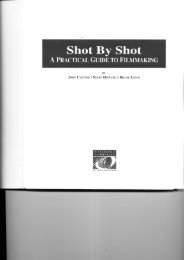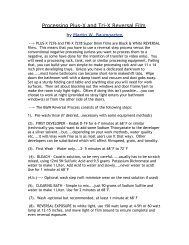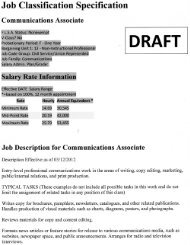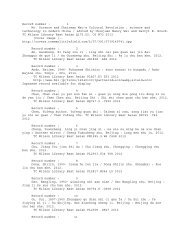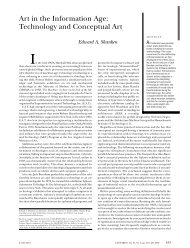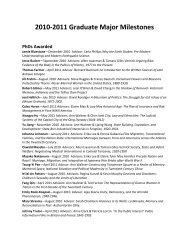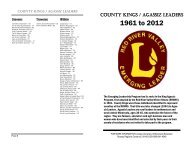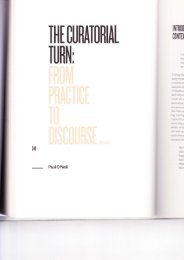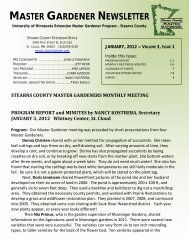Labelling and Marking Museum Objects Booklet
Labelling and Marking Museum Objects Booklet
Labelling and Marking Museum Objects Booklet
You also want an ePaper? Increase the reach of your titles
YUMPU automatically turns print PDFs into web optimized ePapers that Google loves.
3. Sewn on label<br />
This advice is based on guidelines provided by the NML<br />
Materials<br />
Tyvek<br />
Pros:<br />
Cons:<br />
Tyvek (spun bonded polyolefin)<br />
Permanent markers or Rotring pens <strong>and</strong> permanent black ink<br />
Washed or unbleached cotton tape in various widths (to wash cotton tape soak it very hot water)<br />
Tie on tags<br />
Fine cotton or polyester thread<br />
Water resistant;<br />
Cheap to buy as a sheet <strong>and</strong> cut to size;<br />
Available in a range of weights. Soft weights are more sympathetic to soft, fragile objects;<br />
Smoother to write on than cotton tape for textiles <strong>and</strong> do not need hemming.<br />
Not all pens write on it. Some inks float off on immersion in water, so test;<br />
Risk of static charge which could attract particles from the object surface eg pigment.<br />
Method<br />
1) Assess the object <strong>and</strong> decide whether to sew on a label, attach a tie on label, or make<br />
a special tag. If you are going to sew on a label it must be possible to stitch into the<br />
textile without causing damage. Tie on labels should be attached through a buttonhole,<br />
or similar, so that the fabric is not damaged.<br />
2) Choose a location. Bear in mind whether the label needs to be visible when the textile<br />
is in storage. If the textile is going to be rolled it may be worth marking a long cotton<br />
tape with the same number <strong>and</strong> tying it round the rolled textile.<br />
3) Choose a tape width or label size appropriate to the object size.<br />
4) Write the label neatly. This is easier with a marker.<br />
5) For a st<strong>and</strong>ard flat cotton tape sewn-in label cut the tape approximately 5mm longer<br />
at each end than the finished length of the label, Turn under the raw ends <strong>and</strong> stitch<br />
in place with several long stitches at each end in a fine thread, preferable one that<br />
matches the textile not the label. The procedure for a sewn-in Tyvek label is the<br />
same, except no turnings are needed.<br />
6) Tape <strong>and</strong> Tyvek can also be used to make looped labels sewn to the textile at one<br />
end only. This is particularly suitable for flat textiles with a hemmed edge. The loop<br />
can be arranged so that the number can be seen with the textile flat in store, but<br />
tucked beneath for display. The stitching can be concealed in the hem so that it<br />
cannot be seen from the right side.<br />
7) Special Tyvek tags are used for fragile textiles, where a stitched label or a tie-on tag<br />
would cause damage. The number is written on a small piece of Tyvek <strong>and</strong> a fine<br />
needle is used with a length of fine polyester thread which is passed through the<br />
Tyvek <strong>and</strong> through an existing hole in the textile or between the threads from which<br />
it is woven. The ends of the thread are then knotted. This lightweight label puts little<br />
strain on the textile.<br />
7



